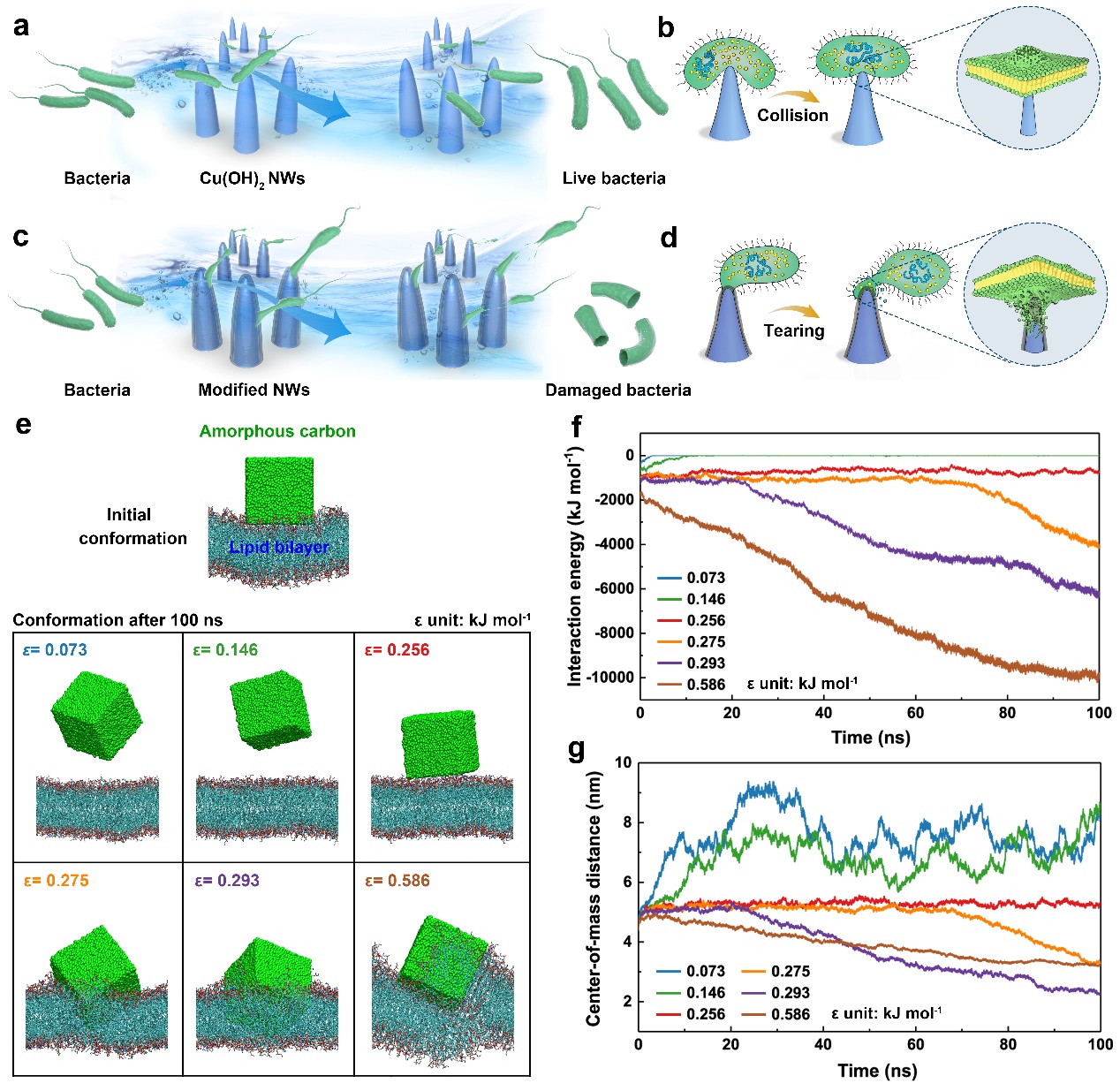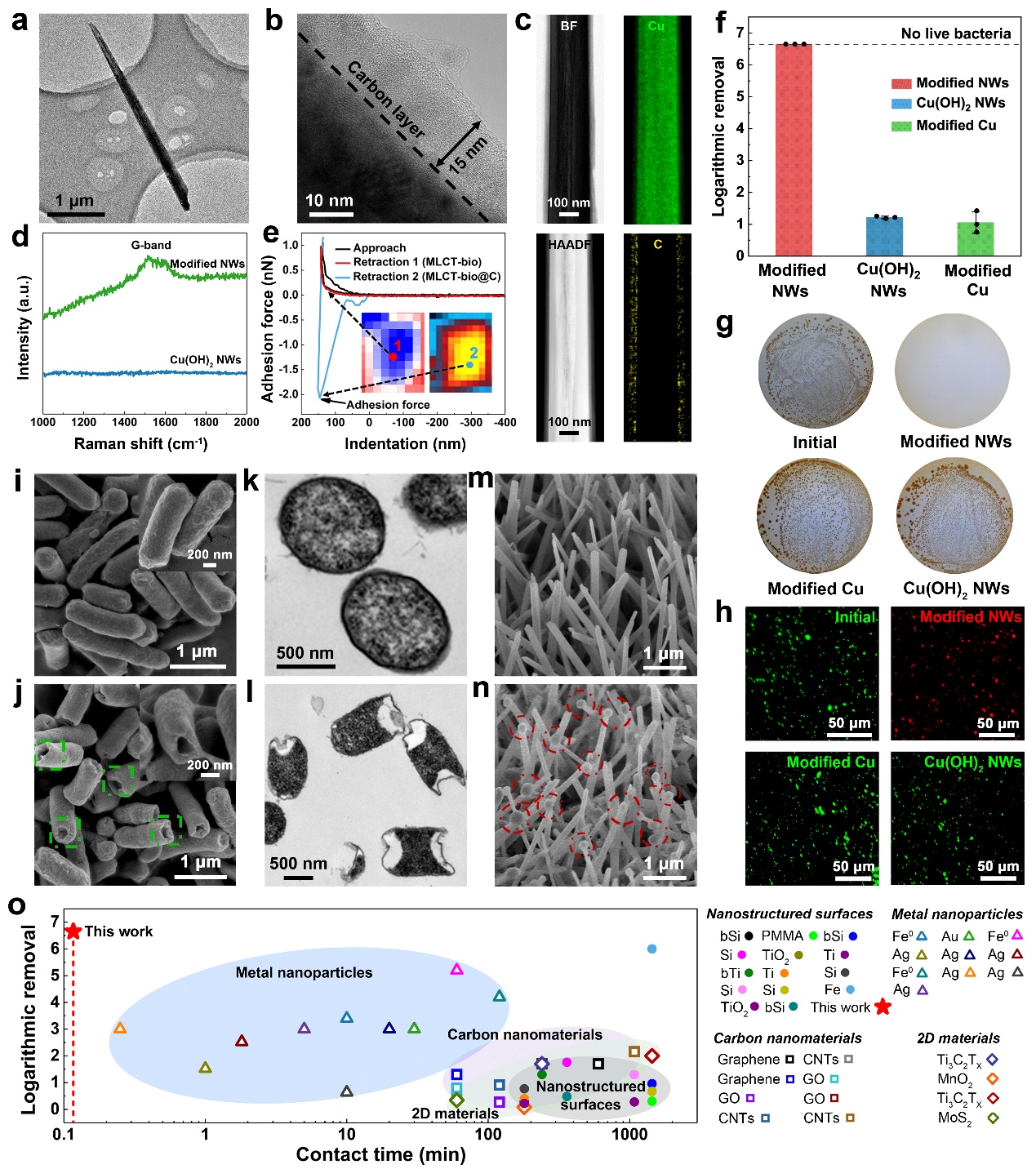Disinfection is a crucial process in controlling pathogenic microbes and preventing waterborne diseases. However, current disinfection technologies, which rely on strong oxidation or ultraviolet radiation to kill microbes, face challenges such as high energy and chemical consumption, and the formation of toxic and hazardous byproducts.
Recently, Professor Hu Hongying from the School of Environment at Tsinghua University, along with the teams of Wu Qianyuan and Yang Cheng from the Tsinghua Shenzhen International Graduate School, reported a novel hydrodynamic-bactericidal mechanism based on nanotips. This mechanism utilizes a mild water flow to effectively tear up bacteria through the dispersion force between carbon-coated nanotips and bacteria. The team further confirmed through theoretical calculations that sp2 carbon has a strong dispersion interaction with bacterial membranes, allowing bacteria to be captured by nanotips in the flow field. Subsequently, under the influence of drag forces in the flow field, the bacteria are torn and ruptured (Figure 1).

Figure. 1. Schematic illustration of the hydrodynamic-bactericidal mechanism through nanotips
The researchers utilized porous copper foam to prepare carbon-coated nanowires. When contaminated water flows through this material, it causes severe mechanical damage to bacteria (Figure 2). Combining flow field calculations, bacterial mechanical property tests, and finite element simulations of bacterial deformation, the researchers confirmed that the stress produced in the instantaneous adhesion-flow field tearing effect of carbon-coated nanotips exceeds the critical stress of the bacteria, whereas the hydrodynamic collisions between bacteria and nanotips cannot destroy bacteria.

Figure. 2. Preparation and bactericidal performance of carbon-coated nanowires
This mechanism effectively inactivates various typical bacteria in water and achieves stable and efficient disinfection during a continuous one-month operation. The technology utilizes the kinetic energy of water flow to kill pathogenic bacteria without the need for chemical reagents or additional energy supply, thereby avoiding secondary pollution issues. The research results provide a new strategy for decentralized water treatment and drinking water safety management in remote areas, serving as inspiration for the control of pathogenic microbes in other fields.
The related research findings were recently published in the internationally renowned journal "Nature Communications" under the title "Hydrodynamic tearing of bacteria on nanotips for sustainable water disinfection." The corresponding authors of the paper are Professor Hu Hongying from the School of Environment at Tsinghua University, Associate Professor Yang Cheng, and Associate Professor Wu Qianyuan from the Tsinghua Shenzhen International Graduate School. The first authors are Peng Lu, a doctoral student from the Class of 2018 at the Tsinghua Shenzhen International Graduate School (now a postdoctoral researcher), and Zhu Haojie, a doctoral student from the Class of 2020. Other authors include Wang Haobin, a doctoral student of the Class of 2019 from the School of Environment at Tsinghua University, and Guo Zhenbin, a postdoctoral researcher at the Tsinghua Shenzhen International Graduate School (now an assistant professor at Shenzhen University). The research received funding support from the National Natural Science Foundation of China, the Shenzhen Science, Technology and Innovation Commission, and the Anti-Epidemic Special Fund of Tsinghua Shenzhen International Graduate School, etc.
Paper Link: https://doi.org/10.1038/s41467-023-41490-5





